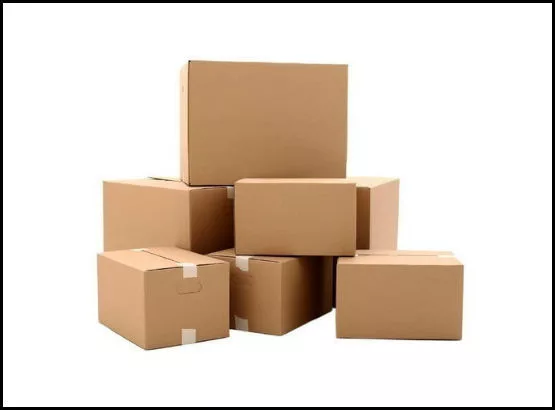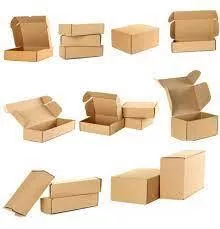Mono Carton Manufacturers
Mono Carton packing is a type of packaging that uses pre-made cardboard boxes to store and transport products. It is ideal for businesses looking to reduce the amount of material used in their packaging processes and provides a cost-effective alternative to other types of packaging materials due to its lightweight construction and ease of assembly. Benefits of mono cartons include protecting products from damage during transit and providing space for branding messages on the mono carton box itself.
Packaging materials for food preservation ensure the safety and quality of food. Proper storage temperatures should be maintained to prevent spoilage and contamination. Special equipment, such as refrigerators and freezers, should be used to store food. Additionally, it is important to properly label all packages containing food products to provide information about shelf life and related details.
Types of monochromatic packaging:
The components of mono carton packaging include the mono carton box itself, cardboard dividers and/or inserts, sealing tape or glue, labels or tags, and product-specific cushioning materials. The box is typically made from a single piece of corrugated cardboard that is folded into shape to form the sides and lid. Depending on its size and intended purpose, it may also feature flaps for added strength. Cardboard inserts can be used to separate products within the carton while providing additional shock absorption during transit. Sealing tape or glue reinforces the seams between the sections of the box and prevents items from slipping out when opened. Labels or tags provide identification for contents as well as branding messages for marketing purposes. Finally, product-specific cushioning materials, such as bubble wrap, are placed around fragile items in order to protect them during transportation.
Paperboard packaging materials for food are another popular choice among food manufacturers for their cost-effectiveness and sustainability benefits. Paperboard containers provide an effective barrier against water vapour, light exposure, and oxygen infiltration while being manufactured from renewable resources such as wood fibres or recycled paper products. Moreover, this type of packaging can be tailored with various print finishes, such as metallic foils or embossing, to add visual appeal to the product presentation on store shelves.

There are several different types of mono carton boxes available depending on their size and usage requirements; these include standard boxes (for books), medium boxes (for electronics), large boxes (for furniture), and specialty boxes (designed specifically for certain products). Standard sizes are typically printed with general guidelines regarding how much weight they can hold; however, custom sizes can also be ordered based on individual requirements. Additionally, some manufacturers offer pre-assembled kits that include all necessary components, including insulation foam inserts, in order to make packing more efficient.

When selecting the right mono carton manufacturers, it is important to understand your specific requirements and be prepared to communicate these needs with potential suppliers. Begin by assessing the type of product you intend to package, as this will determine what kind of box would best suit your needs. Consider factors such as size, weight, shape, and complexity, all of which can help narrow down suitable manufacturers. Additionally, consider whether or not a custom design is necessary in order to meet any special packaging requirements you may have.
Once you’ve determined what type of mono carton box would be most appropriate for your product, begin researching different mono carton manufacturers who specialise in producing boxes that fit these criteria. Make sure to read customer reviews and compare pricing options between companies before making a final decision on which one is best for you. It’s also worth consulting industry experts or other businesses that have worked with similar products in order to get an idea about which brands offer reliable services at competitive prices.
Finally, once you’ve made a selection of potential qualified vendors, it’s important to communicate clearly with them throughout the entire process, from initial inquiry through production and delivery stages until completion. This includes providing detailed information about product specifications so they can make informed recommendations regarding material choice, printing techniques, and finishing methods; ensuring quality control measures are strict enough; agreeing on payment terms; setting realistic deadlines for orders, etc. Doing so will ensure that both parties achieve their desired results while maintaining clear communication along the way.
Designing the mono carton packaging:
When designing mono carton packaging, there are several key considerations that must be taken into account. Firstly, the size and shape of the box should be determined based on the type of product it will contain and its intended purpose. For instance, if you are packaging electronics, a medium-sized box with an insert to provide additional protection would be suitable. Alternatively, if you’re packing books, a standard book-size cardboard box with no inserts would suffice.
Once you have selected the correct size and shape for your package design, consider how you want to print your branding messages or logos onto the cartoon itself. Most manufacturers offer full-colour printing options as well as custom die-cut shapes, which can help create eye-catching designs that stand out from other products on shelves or in mailers. It is also important to choose materials, such as paper stock, that are strong enough to withstand wear and tear during transit while still displaying attractive visuals when printed upon.
Finally, select cushioning materials such as bubble wrap and foam inserts that will not only protect fragile items inside but also keep them secure during shipping journeys. This is especially important for items like electronic components, which require additional shock absorption due to their delicate nature. By taking all these elements into consideration when designing your mono carton package, you can ensure maximum efficiency in both product presentation and transportation needs while creating an effective design at minimal cost.
Printing the monochromatic carton
When printing monochromatic carton packaging, it is important to consider the best techniques for producing quality and visually appealing results. Common methods used include offset printing, flexographic printing, digital printing, and screen printing. Obed printing uses plates to transfer ink onto a rubber blanket before pressing it onto paper or cardboard substrates, but can be expensive. Flexographic printing offers fast speeds and efficient ink use, while digital printing is faster and more accurate than traditional processes. Screen printing is one of the oldest yet popular options available, with reliable, durable outcomes despite slower outputs.
Fulfillment and Delivery
The distribution process involves taking customer orders from online or through a physical store, ensuring they are accurately identified, located, and packaged for delivery. Depending on the size of the business, it may need to outsource this task to an external logistics provider. Customs requirements should also be taken into account when exporting goods overseas. Special considerations must be made regarding the most appropriate delivery options based on customer needs, such as door-to-door service or self-pickup from designated outlets. Companies should also consider offering flexible payment terms such as cash on delivery where possible to give customers more choice over how they pay for products received. Ultimately, choosing an effective shipping strategy tailored towards customer convenience will help improve satisfaction rates while saving time and money.
Mono carton packaging is a cost-effective solution for businesses that need to safely transport products while making a strong visual impression. It is important to choose the right materials, printing techniques, cushioning methods, and shipping strategies to create custom packages that meet customer needs and provide an optimal experience. Companies should offer detailed information about product specifications, quality control measures, and payment terms to ensure that the package meets the desired outcomes. Additionally, all elements of package design should be considered before committing to guarantee that the goods will arrive safely and with minimal cost.
